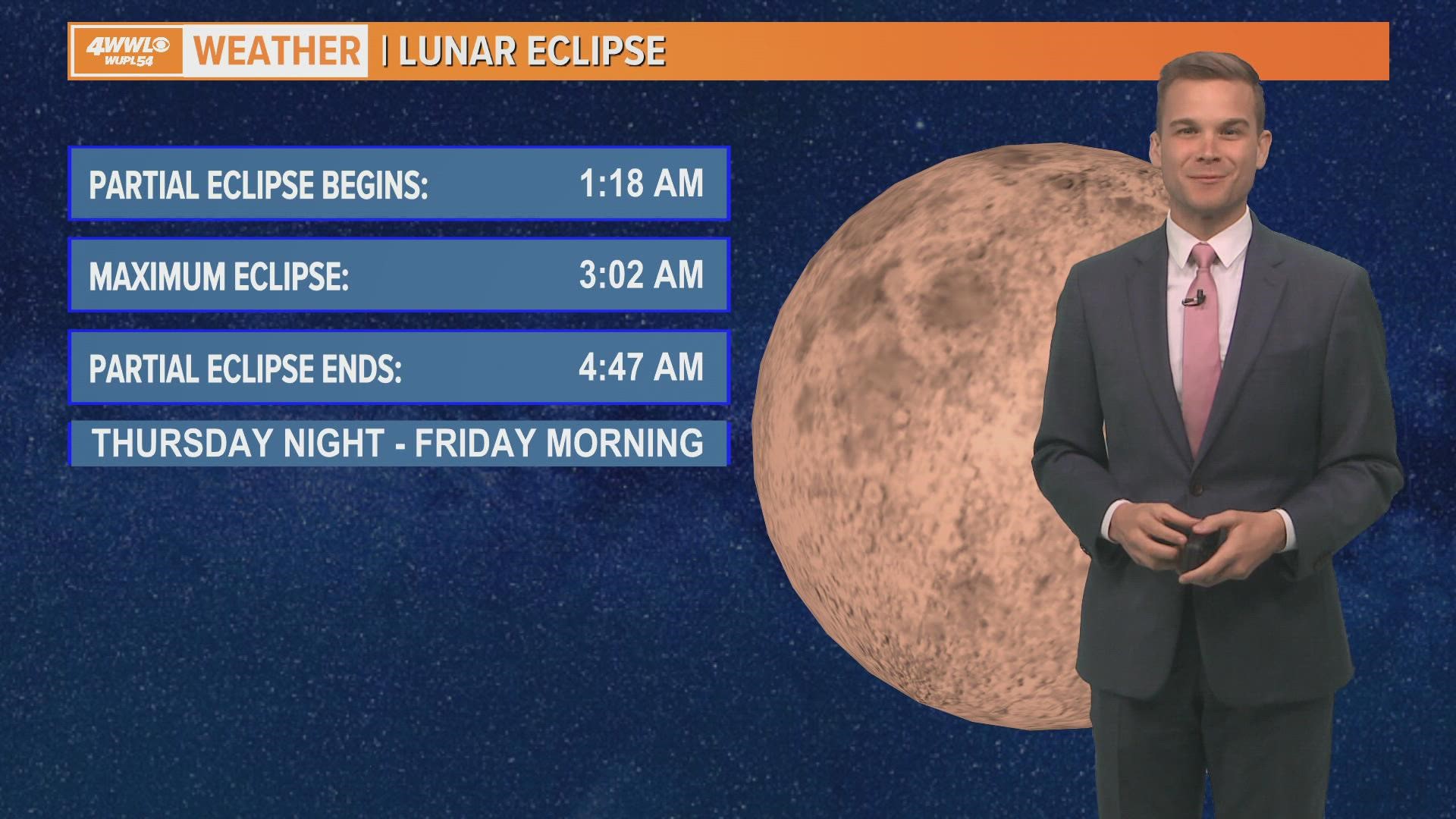TAMPA, Fla — If you take a moment to look up at the night sky on Nov. 19, you'll get to witness the longest partial lunar eclipse of the century.
For a few hours on Friday, the Moon will slip into the Earth's shadow to the point that 97-percent of it is eclipsed. According to Butler University's Holcomb Observatory, the phenomenon will be the longest of its kind in 580 years.
The full shadow of the Earth will begin falling on the Moon at 2:18 a.m. ET and will progress until the peak of the eclipse at 4:02 a.m. ET, according to NASA.
"The Moon will be in full shadow and only a small sliver of the left side of the Moon will shine in the partial shadow of the Earth," the nation's top space agency wrote.
"If you were on the Moon in this shadow and looking back at the Earth, you would see all of the Earth's sunrises and sunsets falling on you and the surface around you, giving the Moon a reddish-brown color," NASA adds.
EarthSky reports viewers in North America, eastern Australia, New Zealand and Japan will be able to see the partial lunar eclipse in its entirety. Sadly, those in Africa, the Middle East and western Asia will not be able to catch the phenomenon.
November has been a month full of celestial events. The brightest planet, Venus, could be seen near the moon on Nov. 7 and Nov. 8. Although the dates have passed, Venus is still be visible in the sunset direction throughout the rest of the month, EarthSky says.

